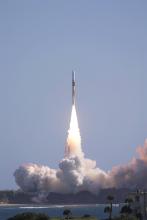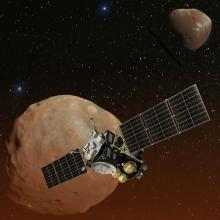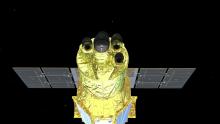Listen to today's episode of StarDate on the web the same day it airs in high-quality streaming audio without any extra ads or announcements. Choose a $8 one-month pass, or listen every day for a year for just $30.
You are here
SLIM
When the United States and the Soviet Union sent the first robotic landers to the Moon, in the 1960s, they were lucky just to hit the Moon. But today’s missions are aiming for pinpoint landings — a requirement for reaching important scientific targets.
An example is called SLIM — Smart Lander for Investigating the Moon. It’s a Japanese mission that’s scheduled for launch within the next few weeks. It’ll share a ride to space with an X-ray telescope.
It’s Japan’s first lunar lander. And it’s designed mainly to evaluate the technology for precise touchdowns. The small craft will aim for a zone about the size of a football field. If it works, it’ll set the stage for more ambitious missions in the future.
SLIM’s target zone is near the Marius Hills Hole — a round pit that’s hundreds of feet wide, and perhaps 250 to 300 feet deep. It may be an entrance to a lava tube — a tunnel carved long ago by flowing lava. Such tubes hold clues to the Moon’s volcanic history. And they could serve as homes for future astronauts.
SLIM will carry a tiny passenger: a rover called Sora-Q. It was designed by the company that created the Transformers and other popular toys. It’ll fly to the Moon curled up to about the size of a baseball. On the Moon, its wheels will unfold and carry it across the surface.
It’ll take weeks for SLIM to reach the Moon. So it’ll be a while before we know if it achieved its main goal: a pinpoint landing on the Moon.
Script by Damond Benningfield






